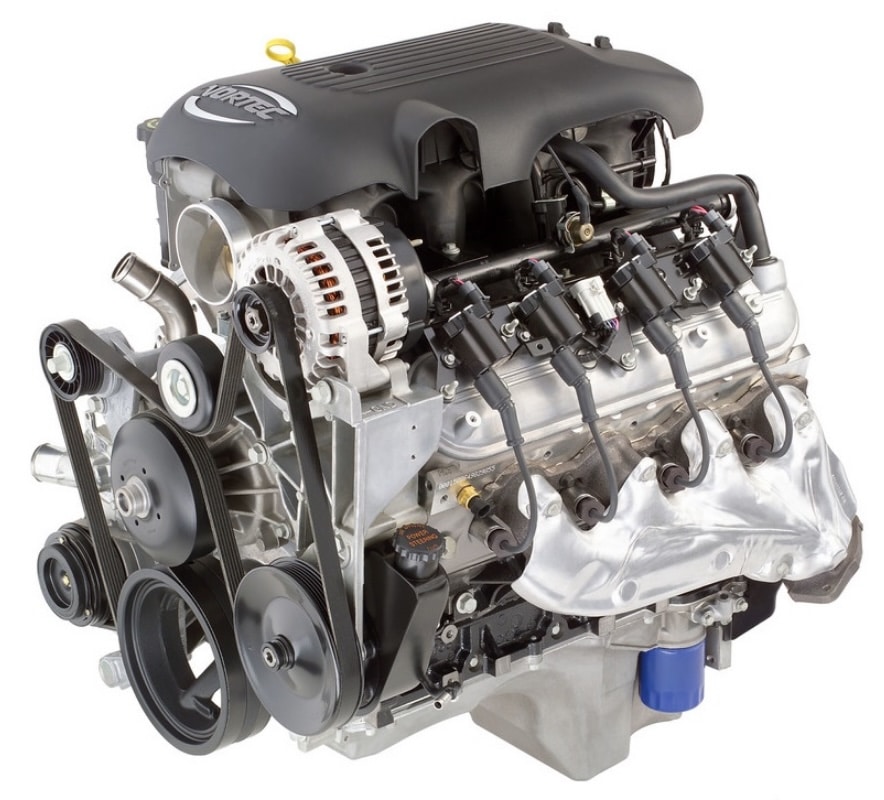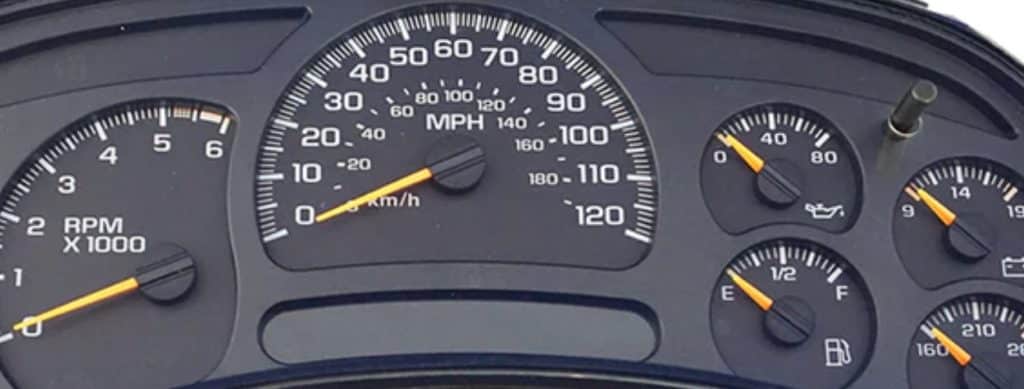The Chevrolet 5.3 Vortec engine is one of the most reliable engines ever built. You’ll find the LM7 engine in work trucks, cargo vans, and family SUVs built through the 2007 model year.
They are known for their bulletproof design, with shortblocks going to half a million miles with almost no visible bearing wear.

The standard hot idle oil pressure for a LM7 Silverado or Sierra is 25 to 35 PSI.
LM7s are twenty years old now (give or take a few years), and it’s important to know how much life is left in one before buying a high mileage engine.
Maintaining the correct oil level is key to keeping your engine in top shape, so it lasts as long as possible. Checking the oil LM7 hot idle oil pressure is one of the best ways to tell if there’s any problem with the engine.
What Is the Right Oil Pressure for a 5.3 Engine?

There are different oil pressure measurements for a 5.3 engine, depending on if you’re idling or operating the vehicle.
When the vehicle in question is cold, the oil pressure will be higher. It’ll usually idle around 40 PSI and can increase up to around 60 PSI when the engine speed increases.
After the LM7 warms up, the oil pressure will drop. On an older Silverado, Sierra, Express, etc, you should expect an operating range of 30-50 PSI when the engine is hot.
If the oil pressure gets much lower than 40 PSI hot going down the highway, it may indicate that the oil filter is dirty and the oil pump is having a hard time getting oil through the engine.
What Is a Normal Idle Oil Pressure?

The standard hot idle oil pressure for a LM7 Silverado or Sierra is 25 to 35 PSI. The LM7 hot idle oil PSI is usually 35. Twenty five PSI suggests the engine is relatively worn.
What Is a Normal Operating Oil Pressure?
Your engine oil should reach its normal operating pressure after running for about 20 minutes. The pressure gauge needle should remain steady at the midpoint if your vehicle has an oil gauge.
A truck’s oil pressure generally ranges from 30 to 70 PSI during operation. Anything lower is cause for alarm, as your engine will shut off. Anything higher can also cause damage to your vehicle.
Most truck drivers with LM7 engines average 45 PSI when they’re driving at 70 miles per hour. Pushing your truck to speed up or driving uphill can change the pressure temporarily.
How Do You Know if Your Oil Pressure Is Wrong?
The clearest sign that your oil pressure is wrong is when the warning light comes on. It’s an image of an oil can with a drop coming out.
However, this light could mean that you must top off your oil, your oil is leaking, or the pump’s broken. The Powertrain Control Module (PCM) will activate an insufficient oil warning if the oil level is too low.
You’ll know you have low engine oil pressure by signs such as:
- Engine loses power or stalls
- Burning oil smell when your car runs
- Engine louder than normal when running
- Car overheats when you drive it
- Oil pressure warning
How to Test Your Oil Pressure
Mechanical Gauge
You can test your engine’s oil pressure with a specialized tool and an extra person, though you won’t need any mechanical skills beyond that. You can find the oil pressure sender on the engine block or check your owner’s manual for more details.
Mount the oil pressure tester according to its instructions. Let the engine idle for five minutes so it reaches operating pressure. Check your vehicle’s instructions to see what RPM you need to determine the oil pressure, for the LM7, that’s 40 PSI.
The other person stays in the car and maintains that RPM while you take the pressure readings. Then turn off the engine, let it cool, and remove the oil pressure tool. If your oil pressure is ideal while it’s operating, you can drive safely.
Scan Tool
You can hook a scan tool into the OBDII reader and get an oil pressure reading directly from the sensor if you have a reason not to trust the gauge.
Other Ways to Know if an Engine is Good or Bad
This article is written from the perspective of trying to help someone determine if the LM7 equipped vehicle they are looking at has a good engine. Other than the hot idle oil pressure, here are some good ways to tell if the engine is good or not:
- Blue smoke- indicates that the piston rings have worn out.
- Check engine light- The check engine light isn’t a deal breaker for the LM7. They notoriously get EVAP related trouble codes, but that won’t affect the way the engine runs at all.
- Listen for knocking- Does the engine knock or tick when running it? If you do hear a tick, look at all the bolts where the exhaust manifold connects to the cylinder head. They are known for shearing.
- Check the oil- If they oil is foamy or sludgy, it could indicate a larger problem.
Final Notes
Proper vehicle maintenance can help you notice when something isn’t right. The symptoms of high or low oil pressure are easy to detect if you pay attention. The LM7 hot idle oil PSI is 25 to 35. This knowledge ensures you can test your engine pressure and know that everything runs as it should.
